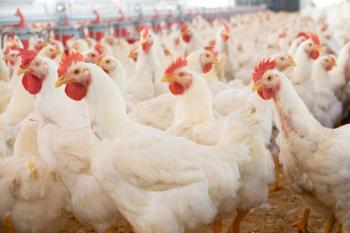
What are the best practices for antibiotic use in canine infectious respiratory disease complex?
A 10-day observation period is recommended in dogs with mild clinical signs as most pathogens involved in this respiratory disease are viral.
The following article is the second in a three-part series summarizing information from
(Shutterstock)Overview
Canine infectious respiratory disease complex (CIRDC) can be caused by a variety of organisms, including canine adenovirus 2, canine distemper virus (CDV), canine respiratory coronavirus, canine influenza viruses (CIV), canine herpesvirus, canine pneumovirus and canine parainfluenza virus. The most common bacterial causes include Bordetella bronchiseptica, Streptococcus equi subspecies zooepidemicus and Mycoplasma species. Coinfections with multiple pathogens are also common.
Often, dogs may be asymptomatic carriers of these pathogens. However, when clinical signs are present (including mucopurulent nasal or ocular discharge), the guideline authors suggest taking precautions, given the risk of highly contagious respiratory diseases such as CDV or CIV. Vaccines do not prevent colonization, shedding or clinical signs (with the exception of CDV), but vaccination may reduce the severity of disease in vaccinates.
Cytology and culture of the nasal discharge are not recommended because these are rarely useful in the establishing a diagnosis. Furthermore, while bacterial cultures and molecular assays are available, clinicians should remember that these organisms can be isolated from both healthy and diseased dogs and vaccine strains may be amplified. The guideline authors recommend that these tests be reserved for dogs with high risk of infection, such as those in breeding or shelter facilities, those with evidence of pneumonia, or those with severe or refractory disease.
Treatment
Similar to their recommendation in cats, the guideline authors recommend a 10-day observation period for dogs with mild clinical signs (i.e. those with normal appetite and attitude). The routine use of antibiotics is discouraged since most pathogens involved in CIRDC are viral. Antibiotics should be considered, however, for dogs with mucopurulent discharge that also show evidence of fever, lethargy or inappetence. For these patients, the guideline authors recommend the use of doxycycline empirically for seven to 10 days as the first-line antibiotic option as most common respiratory bacterial pathogens are susceptible to this medication.
Amoxicillin-clavulanic acid (11 mg/kg orally every 12 hours) can be considered as an alternative for dogs that do not respond to or cannot tolerate doxycycline. Inhalational aminoglycoside treatment is not recommended by the work group because there are no controlled studies documenting its safety or efficacy. If the patient does not respond within seven days, further testing (such as diagnostic imaging) should be initiated before considering use of a different drug class.
Table: First-line antimicrobial options
Type of infection
First-line drug options
Canine infectious
respiratory disease
complex (bacterial component)
Doxycycline: 5 mg/kg PO every 12 hours, or 10 mg/kg PO every 24 hours
or
Amoxicillin-clavulanate:
--Dogs: 11 mg/kg PO every 12 hours
--Cats: 12.5 mg/kg PO every 12 hours
(Dose is based on combination of amoxicillin-clavulanate)
Lappin MR, Blondeau J, Boothe D, et al. Antimicrobial use guidelines for treatment of respiratory tract disease in dogs and cats: Antimicrobial Guidelines Working Group of the International Society for Companion Animal Infectious Diseases. J Vet Intern Med 2017;30:279-294.
Link to article:
Newsletter
From exam room tips to practice management insights, get trusted veterinary news delivered straight to your inbox—subscribe to dvm360.





